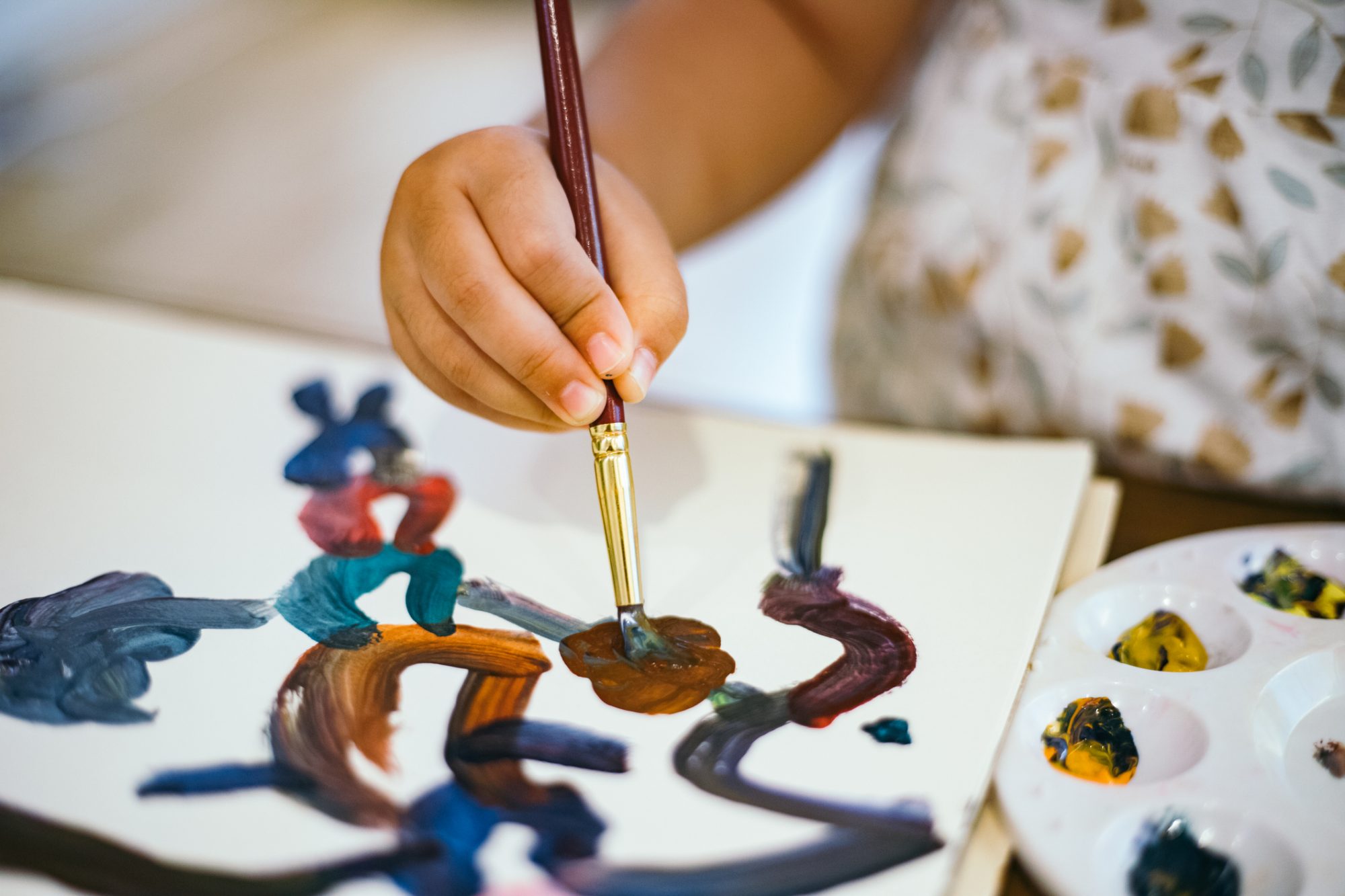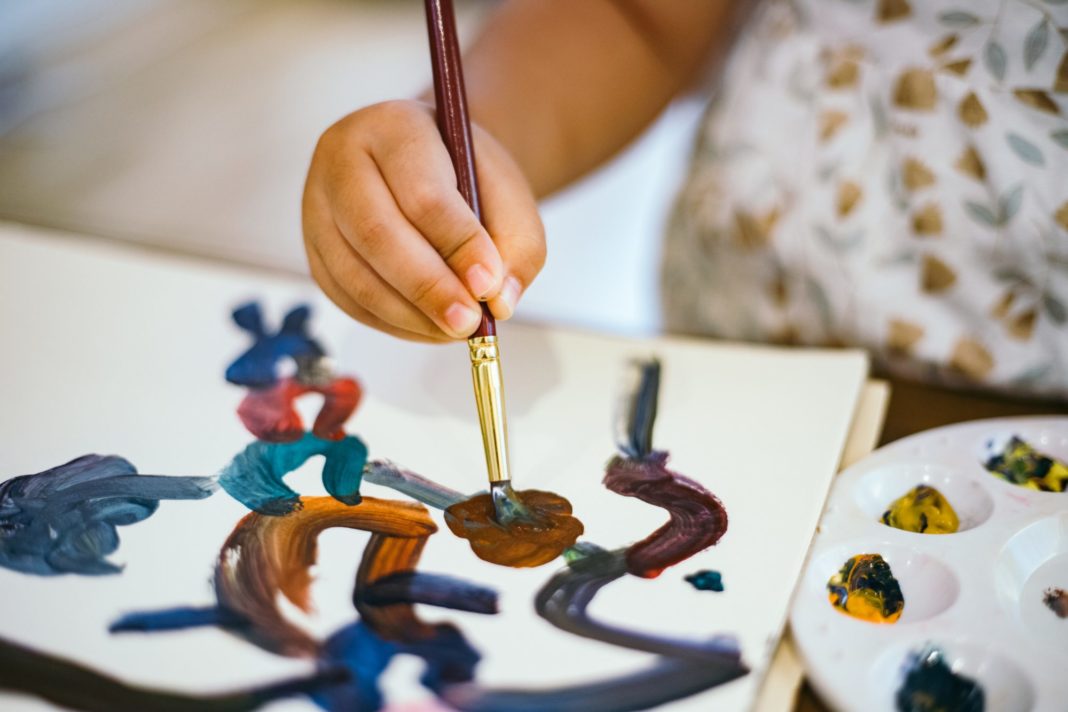Reggio Emilia is both a city in northern Italy that was devastated after World War II and an educational approach, developed by the city's people as part of their efforts to rebuild after the war.
"The citizens of the community came together and said, 'What do we want? What do we value? And what do we want to be important to our new community that we're rebuilding?'" says Kristin Papoi, Ph.D., a clinical assistant professor of education at the University of North Carolina at Chapel Hill. "Out of the rubble, with the bricks of the cobblestone streets in the town, they rebuilt their schools."
Here are seven things to know about the Reggio Emilia approach.

Principles of the Reggio Emilia Approach
The Reggio Emilia approach, which is designed primarily for infants to preschoolers, places children at the center of their learning, Dr. Papoi says. "The child is assumed to have rights and to have the knowledge of how they need to learn and should be learning."
A key text is the poem 100 Languages, written by Loris Malaguzzi, the educational movement's founder. It assumes that children have 100 languages, such as the language of dance, art, laughter, play, and song, which they use to make sense of the world. To learn, they need access to all those languages. But, the poem says, traditional educational practices where children are told to listen, not speak, or think without doing, robs them of those various languages.
How Children Learn In Reggio Emilia Schools
What children do during the school day relies, primarily, on what they're curious about. Teachers talk to students about their interests or notice what they gravitate to and then support and observe the children as they explore the topic. Classrooms, which are considered the "third teacher," are stocked with a wide variety of materials that encourage creative expression and learning. Students work on projects based on their interests; collaboration is encouraged.
Children might come away from their work learning letters or numbers, but it depends on what they're working on. "If I see a kid very interested in mark-making using the paints I've provided … we might do some exploration of that," Dr. Papoi says. "But there is no set curriculum that says, 'Here's how you do the letters and numbers.' Those things will come."
What Are Reggio Emilia-Inspired Schools?
Reggio Emilia schools are only in Reggio Emilia, Italy. Schools in any other part of the world that rely on the approach's principles are considered Reggio Emilia-inspired.
Disadvantages of the Reggio Emilia Approach
Reggio Emilia schools in Italy are public schools, open to all children regardless of their socioeconomic status. In the United States, Reggio-inspired schools are primarily private schools, too expensive for most families. And many are spaces filled with white families and educators, which can feel jarring for children of color.
"Even a well-resourced and elite, predominantly white school can leave a child of color feeling excluded, isolated, unmotivated, and lacking really healthy racial identity," says Valerie I. Harrison, Ph.D., co-author of Do Right By Me: Learning to Raise Black Children in White Spaces.
When considering schools, Dr. Harrison encourages parents of all races to ensure that the program recognizes and celebrates diverse cultural traditions and has recruitment practices in place that encourage diversity among teachers and students.
How Does Reggio Emilia Compare to the Montessori Method?
The two approaches have a lot in common, says Catherine McTamaney, Ed.D., associate professor of the practice of education at Vanderbilt University. They are community-centered spaces that focus on following the child and their potential.
One place they differ, however, is in the materials, says Dr. McTamaney. Montessori classrooms are stocked with instructional materials designed specifically for the approach. But in Reggio Emilia, the entire world is filled with materials that could lead to learning.
Reggio Emilia-Style Activities
What happens inside classrooms really depends on the interests of the kids and which 100 languages they want to use. What happened inside the Reggio-inspired Helen Gordon Child Development Center, in Portland, Oregon, is typical. Children were interested in birds, and their discussion eventually focused on birds' eyes, says Will Parnell, Ed.D., a Portland State University professor and the center's pedagogical liaison. Soon, they were discussing the differences between animal and human eyes, creating art based on their discussions. "It can be very organic," says Dr. Parnell.
What Should Parents Look For in a Reggio-Inspired School?
An important practice of any Reggio-inspired school is that children should be present even in their absence, Dr. Parnell says. Walls, for example, might be filled with children's artwork and quotes about their projects. Providing a welcoming space is another key aspect of the philosophy, he adds. The entryway, for example, should be filled with information about the school's philosophy and news.
"What they really believe at the end of the day … is that children are born wanting to be with us," he says. "And if we can express that through welcome, then we are opening ourselves to the child who wants to be with us."


